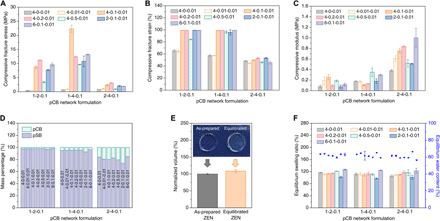Fig. 2. Mechanical and swelling properties of a series of pCB/pSB hydrogels.

(A to D) Compressive fracture stress (A), compressive fracture strain (B), compressive modulus (C), and component mass percentage (D) of a series of pCB/pSB hydrogels with combinations of three pCB network (1-2-0.1, 1-4-0.1, and 2-4-0.1) and seven pSB network (4-0-0.01, 4-0.01-0.01, 4-0.1-0.01, 4-0.2-0.01, 4-0.5-0.01, 2-0.1-0.01, and 6-0.1-0.01) component ratios. (E) Volume change of the pCB/pSB ZEN hydrogel before and after reaching equilibrium in water. The volume of the equilibrated pCB/pSB ZEN hydrogel was normalized to the corresponding as-prepared ZEN hydrogel. Photo credit: D. Dong (University of Washington, Tianjin University). (F) Equilibrium swelling ratios and equilibrium water contents of a series of pCB/pSB hydrogels with combinations of three pCB network and seven pSB network component ratios. Note that x, y, and z for x-y-z represent the molar monomer concentration, cross-linker concentration (mol % with respect to the monomer), and initiator concentration (mol % with respect to the monomer) of the corresponding network, respectively.
